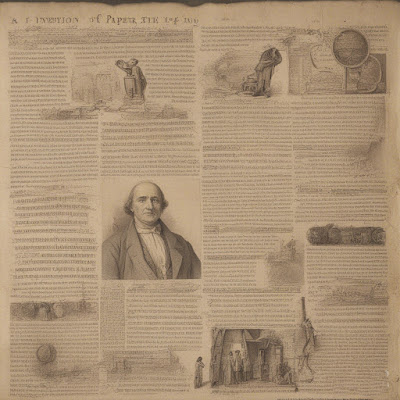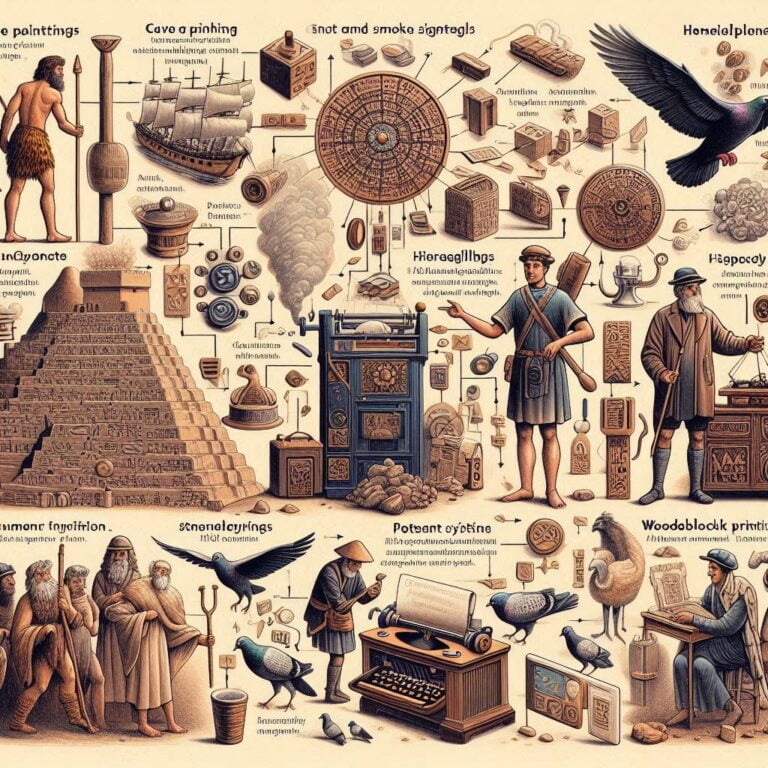Introduction- The Invention of Paper
Paper, that humble sheet woven from plant fibers, is more than just a writing surface. It’s a revolutionary invention, a cultural cornerstone, and a testament to human ingenuity. Its journey through history is a captivating tale of transformation, shaping the very fabric of civilization.
Imagine ancient scribes meticulously etching stories onto papyrus scrolls in the sun-drenched sands of Egypt. Fast forward to bustling medieval workshops, where skilled artisans crafted parchment for illuminated manuscripts, preserving knowledge for posterity. Then, leap to the clattering printing presses of the Renaissance, where the invention of paper birthed the age of mass communication and ignited the flames of intellectual revolution.
But the paper’s story isn’t confined to the past. We’ll also examine its enduring relevance in the digital age, exploring how it continues to spark innovation and adapt to the ever-changing landscape of information exchange. From the rise of e-readers to the resurgence of artisanal papermaking, we’ll discover how paper maintains its unique charm and utility in a world increasingly dominated by screens.
So, join us on this captivating journey through the history and significance of paper. Prepare to be surprised by its hidden depths, its enduring relevance, and its potential to shape the future of communication and creativity.
History of Paper
The earliest paper history in China predates the Han Dynasty, with fragments of hemp paper unearthed from the Qin era (221-206 BCE). However, it was during the Han Dynasty that Cai Lun, a court official, is credited with refining the process in 105 CE. His ingenious method harnessed the fibrous potential of mulberry, bamboo, and hemp, transforming them into a delicate pulp through soaking, beating, and straining. When spread thinly on woven screens and dried in the sun, this concoction yielded the first sheets of true paper, forever altering the landscape of communication and record-keeping.
While Cai Lun’s innovation marked a pivotal moment, papermaking’s roots extend deeper. Archaeological evidence suggests experimentation with papermaking techniques as early as the 2nd century BCE. The invention of ink and brush writing around 221 BCE fueled the demand for a durable and readily available writing surface, paving the way for widespread paper adoption. The history of paper wasn’t confined to China’s borders. By the 7th century, its use had spread throughout East Asia, with each region adding its own unique twist. Korea embraced mulberry bark, Japan experimented with gampi fibers, and India utilized rags and cotton. This cultural exchange fostered innovation and diversification, ensuring the paper’s adaptability and relevance across diverse landscapes.

The Islamic world played a crucial role in the paper’s westward migration. Merchants and scholars, traversing the Silk Road, carried the secrets of papermaking to the Abbasid Caliphate in the 8th century. By the 12th and 13th centuries, papermaking had taken root in Europe, with Spain and Italy witnessing the rise of the first paper mills. Notably, the Fabriano mill in Italy, established in 1264, became a renowned center of papermaking, employing innovative techniques like watermarking and mechanized rag grinding.
By the 15th century, paper had become readily available across Europe. Its impact was profound, fueling the fires of the Renaissance and facilitating the dissemination of knowledge and ideas. The invention of the printing press by Johannes Gutenberg in 1440 further cemented the paper’s role in cultural transformation. Books, once rare and expensive, became accessible to a wider audience, democratizing knowledge and shaping the intellectual landscape of Europe.
Paper History Timeline (Before & After):-
Before paper:
Egyptian Papyrus (3500 BCE): The Nile River provided the ancient Egyptians with papyrus, a versatile writing surface crafted from the pith of the Cyperus papyrus plant. Skilled artisans meticulously sliced the pith into thin strips, layered them at right angles, and pressed them together, creating durable sheets for recording hieroglyphs, religious texts, and administrative documents. (Reference: Pliny the Elder, Natural History, Book XIII)
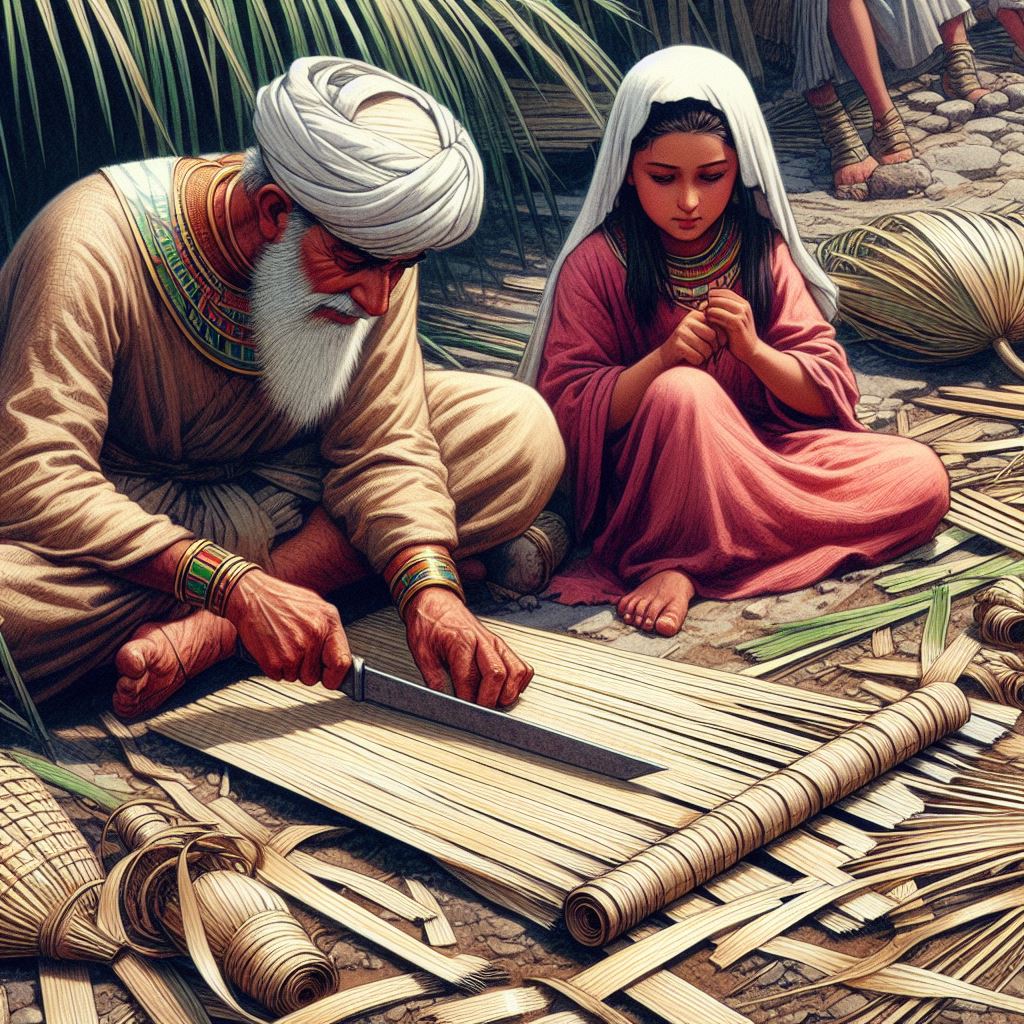
Early Glimmers of Paper in China (2nd Century BCE – 220 CE): While Cai Lun’s innovation in 105 CE is often credited as the birth of papermaking, archaeological evidence suggests earlier experimentation. Fragments of hemp paper unearthed in Qin Dynasty tombs (221-206 BCE) hint at the gradual evolution of the technology. Additionally, texts like the “Recipes for Making Five Essential Things” (dated around 100 BCE) mention paper made from bamboo, suggesting diverse experimentation with plant fibers. (Reference: Tsien Tsuen-hsuin, Paper and Printing, Chapter 1)
Ink and Brush Revolutionize Communication (221 BCE): The invention of ink and brush writing by the Chinese around 221 BCE significantly impacted record-keeping. Durable inks made from soot, lacquer, and plant extracts paired perfectly with the absorbent surface of paper and silk, paving the way for widespread literacy and the preservation of knowledge. (Reference: Needham, Joseph. Science and Civilisation in China, Volume 5, Part 1)
Silk Takes Center Stage (100 CE): Historical records, like the Eastern Han Dynasty scholar Ban Gu’s “Book of Han,” mention papermaking using silk fibers around 100 CE. While less common than other plant-based papers, silk paper found favor for its strength, smoothness, and luxurious feel, often reserved for important documents and artwork. (Reference: Tsien Tsuen-hsuin, Paper and Printing, Chapter 2)
Mulberry Reigns Supreme (600 CE): By the 6th century CE, mulberry bark emerged as the preferred material for papermaking in China. Its abundance, long fibers, and suitability for creating thin, strong sheets made it ideal for mass production and widespread use. This shift marked a turning point in papermaking history, laying the foundation for its global dissemination. (Reference: Hunter, Dard. Papermaking: The History and Art of an Ancient Craft)
Beyond China: Early Writing Surfaces in Other Regions:
3000 BCE – Mesopotamia: Cuneiform tablets, made from wet clay and impressed with wedge-shaped styluses, served as the primary writing surface in Mesopotamia for millennia. Scribes meticulously pressed administrative records, legal documents, and literary works onto these durable tablets. (Reference: Foster, Benjamin R. The Black Land: History of Ancient Egypt)
1800 BCE – Indus Valley Civilization: The Indus Valley Civilization in present-day Pakistan and India utilized seals and carved tablets for record-keeping, often depicting pictographs and geometric patterns. These seals and tablets offer insights into the administrative, religious, and economic life of the civilization. (Reference: Possehl, Gregory L. The Indus Civilization: A New Perspective)
500 BCE – 500 CE: Parchment, made from animal skin, gained popularity in Europe and the Middle East. Its durability and smooth surface made it ideal for writing religious texts, official documents, and literary works. Parchment played a crucial role in the preservation of knowledge during the Middle Ages. (Reference: Roberts, Colin H. and Michael T. Clanchy. Parchment, Paper and Codicology)
After paper:
751 CE: Seeds of Knowledge Sown at Talas: Following the Battle of Talas, Arab forces captured Chinese papermakers, sparking the transfer of papermaking technology to the Islamic world. This cultural exchange marked a pivotal moment, with paper production flourishing in cities like Samarkand and Baghdad, ultimately paving the way for its westward journey. (Reference: Hill, Donald. Islamic Science and Engineering, Chapter 8)
1056 AD: Europe’s First Mill Takes Root: By the 11th century, papermaking had crossed continents, with the first documented European paper mill established in Xàtiva, Spain. This mill, fueled by Moorish knowledge and driven by local materials like linen and hemp, laid the foundation for a thriving paper industry across Europe. (Reference: Hunter, Dard. Papermaking: The History and Art of an Ancient Craft)
1440 CE: Gutenberg Revolutionizes Printing: Johannes Gutenberg’s invention of the printing press in 1440 revolutionized communication and knowledge dissemination. With movable type and mass production capabilities, books and other printed materials became exponentially more accessible, fueling the Renaissance and shaping the intellectual landscape of Europe. (Reference: Eisenstein, Elizabeth L. The Printing Press as an Agent of Change)
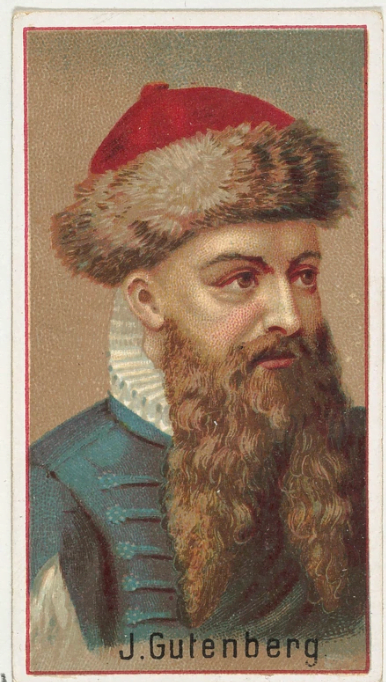
1798 CE: Fourdrinier Machine Ushers in the Industrial Age: The Fourdrinier machine, patented in 1798, marked a paradigm shift in papermaking. This continuous production technology replaced the labor-intensive vat method, dramatically increasing paper output and paving the way for mass production on an industrial scale. (Reference: Tsien, Tsuen-hsuin. Paper and Printing, Chapter 5)
1870s CE: Wood Pulp Rises to Prominence: With the depletion of rag resources, papermakers in the 19th century turned to wood pulp as a readily available raw material. This shift initially met with challenges due to the harshness of wood fibers, led to technological advancements like the chemical pulping process, ultimately solidifying wood pulp’s dominance in modern paper production. (Reference: Hunter, Dard. Papermaking: The History and Art of an Ancient Craft)
20th Century and Beyond- Diversification and Innovation: The 20th century saw the diversification of paper applications, with the development of specialized paper types for photography, packaging, and hygiene products. Technological advancements continued, with machines like the tissue machine enabling even faster and more efficient production. (Reference: Roberts, Colin H. and Michael T. Clanchy. Parchment, Paper and Codicology)
Present Day: Digital Age Challenges and Resurgence: The rise of computer technology and digital communication in the late 20th and early 21st centuries posed new challenges for the paper industry. However, the paper has demonstrated remarkable resilience, finding its niche in areas like high-quality printing, creative applications, and sustainable production practices. Additionally, the surge in e-commerce has fueled the demand for packaging paper, showcasing paper’s adaptability in the digital age. (Reference: The Paper and Packaging Board. Paper & Packaging Today: A Global Perspective)
These are only a few of many examples of events from the history of the paper. The discovery of paper had an immense effect on the evolution of human culture, communication, and technology, and paper continues to alter our world today.
Impact of Paper on Human Civilization
The invention of paper wasn’t just a technological leap; it was a transformative spark that ignited countless revolutions across human history. Its impact, far from confined to dusty libraries, weaved itself into the very fabric of civilization, shaping our communication, education, commerce, and even our understanding of the world around us.
Democratizing Knowledge and Fueling Literacy:
Before paper, knowledge was a precious commodity, locked away in hand-copied manuscripts on expensive parchment. Paper, with its affordability and ease of production, changed the game. Books became accessible, libraries flourished, and literacy rates soared. This democratization of knowledge fueled intellectual revolutions, from the Renaissance to the Enlightenment, as ideas and discoveries spread like wildfire.
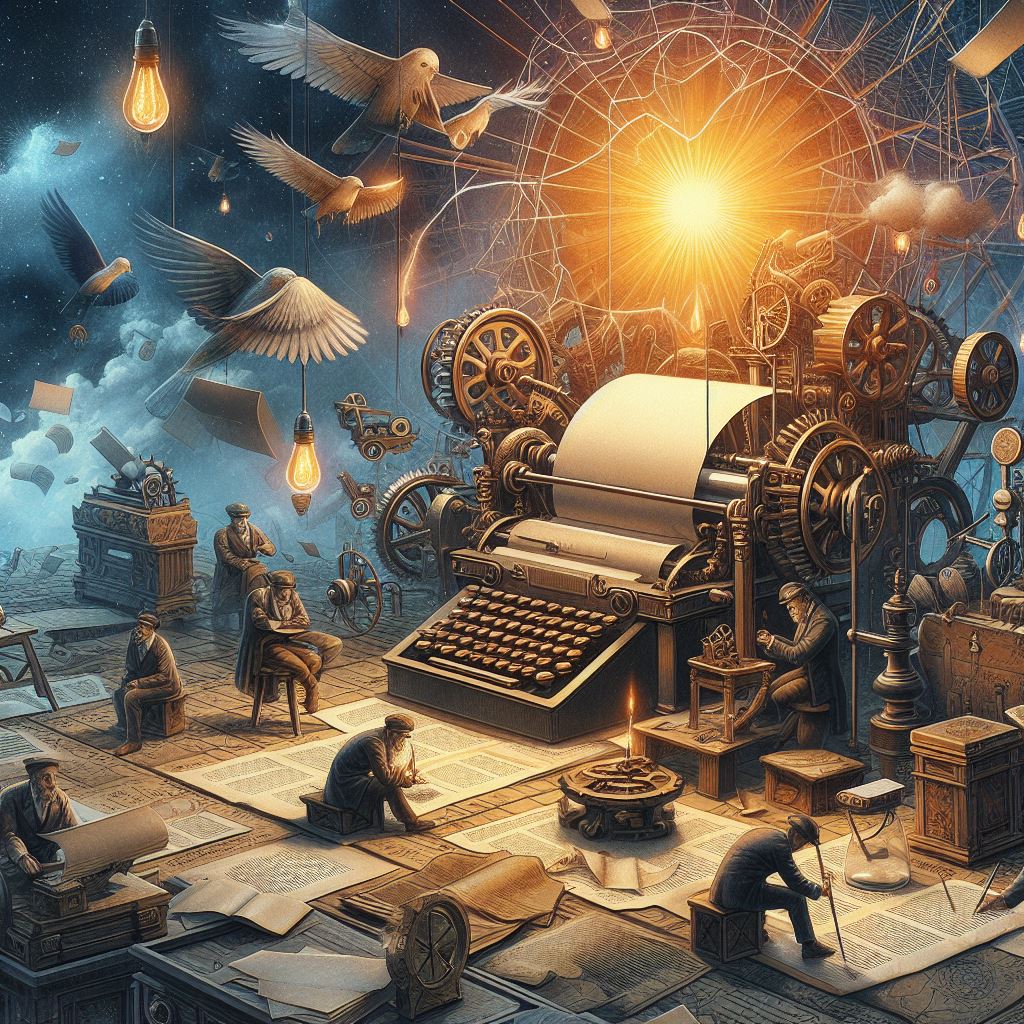
Revolutionizing Communication and Dissemination:
Paper wasn’t just about books; it was the canvas for stories, letters, and news. It enabled vibrant communication across vast distances, fostering cultural exchange and political discourse. The invention of the printing press in the 15th century further amplified this impact. Printed books, newspapers, and pamphlets became potent tools for spreading information, shaping public opinion, and driving social movements. The American and French Revolutions, for example, were fueled by the ideas disseminated through printed pamphlets and newspapers.
Facilitating Business and Trade:
Paper wasn’t just for scholars and revolutionaries; it was the lifeblood of commerce. Bills of lading, invoices, and contracts facilitated trade across continents, allowing merchants to track goods, negotiate deals, and build empires. The introduction of paper currency in China in the 7th century further revolutionized trade, creating a stable and portable medium of exchange that fueled economic growth.
Shaping Scientific and Artistic Endeavors:
Paper became the canvas for scientific and artistic exploration. Astronomers mapped the heavens, mathematicians scribbled complex equations, and physicians documented their findings, all thanks to the readily available surface of paper. Artists found new mediums in the paper, creating delicate watercolors and intricate woodblock prints. The knowledge and creativity captured on paper laid the foundation for countless scientific and artistic breakthroughs.
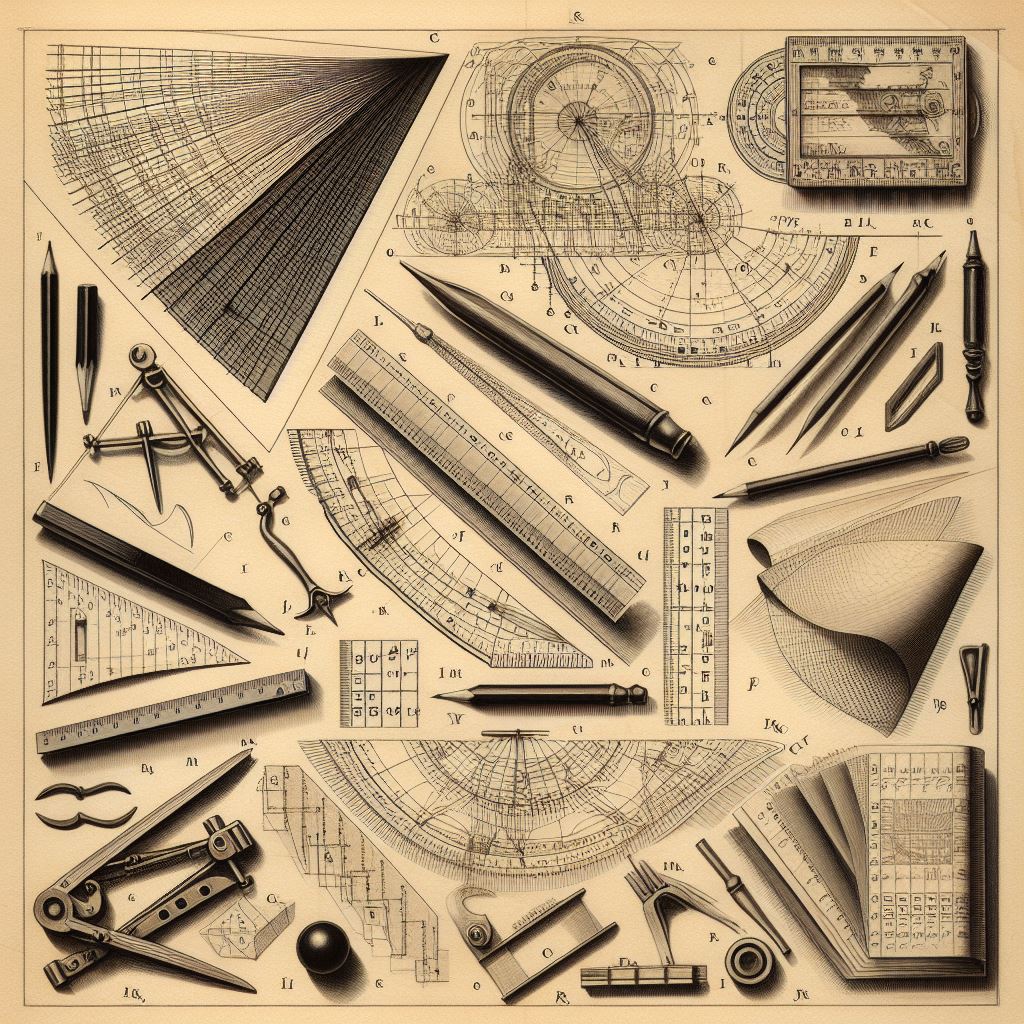
Beyond the Physical: A Legacy of Adaptability:
The impact of paper extends far beyond its physical form. The concept of “paper” has become synonymous with information itself, evolving in the digital age. From e-books to online documents, the essence of paper’s democratization and accessibility lives on in the virtual realm.
Challenges and the Future of Paper:
While the digital age has undoubtedly posed challenges to the traditional paper industry, paper’s adaptability continues to surprise. Sustainable production practices, innovative uses in packaging and creative applications, and its enduring tactile and sensory appeal ensure that paper’s legacy will not fade into oblivion.
Real-Life Examples:
- The Gutenberg Bible, one of the first mass-produced printed books, played a crucial role in the spread of literacy and religious knowledge in Europe.
- The widespread circulation of newspapers during the American Revolution helped to unify colonists and fuel the fight for independence.
- The development of paper currency in China facilitated the growth of the Tang Dynasty and laid the foundation for modern banking systems.
- The invention of wood pulp paper in the 19th century made newspapers and books more affordable, leading to a surge in literacy and access to information.
Greatest Innovations Arising from Paper
Printing Press
Johannes Gutenberg’s 15th-century invention, the printing press, wasn’t just about churning out books; it was a revolution in democratizing knowledge. Ideas, once confined to the cloistered halls of academia, could now be mass-produced and disseminated, fueling the Renaissance and Enlightenment. Scientific discoveries, political discourse, and literary masterpieces found their way into the hands of the masses, igniting intellectual revolutions and shaping public opinion.
Newspapers
The printing press’s offspring, the newspaper, became the lifeblood of informed citizenry. News, once shrouded in whispers and rumors, could now be chronicled and distributed with unprecedented speed and reach. Newspapers not only kept people abreast of current events but also served as a vital check on power, holding governments accountable and fostering a vibrant public sphere. From the American Revolution to the Arab Spring, newspapers have been instrumental in shaping the course of history.
Paper Money
The 8th-century Chinese innovation of paper currency revolutionized commerce. Bulky metal coins were replaced with lightweight, portable paper notes, facilitating trade across vast distances and fueling the growth of international markets. This shift not only boosted economic activity but also paved the way for complex financial systems and modern banking.
Packaging Materials
In the age of environmental consciousness, paper emerges as a hero. Its biodegradability and recyclability make it the ideal alternative to plastic packaging, reducing landfills and mitigating plastic pollution. From innovative corrugated cardboard boxes to eco-friendly shopping bags, paper packaging is leading the charge towards a more sustainable future.
Tissue Paper
This 20th-century invention might seem mundane, but its impact on hygiene and sanitation is undeniable. Soft, absorbent, and readily available, tissue paper has transformed personal hygiene practices, making them accessible and convenient for all. From preventing the spread of germs to providing comfort and care, tissue paper has become an indispensable part of everyday life.
Paper-based Electronics
Most electronic devices contain circuit boards that are made up of glass fiber, resin and metals which are not easy to recycle. Forget rigid circuit boards; the future of electronics might just be written on paper. Flexible, eco-friendly, and potentially cheaper to produce, paper-based electronics hold immense promise for applications in healthcare, communication, and even energy. Imagine wearable health monitors printed on paper or solar panels crafted from cellulose – the possibilities are endless.
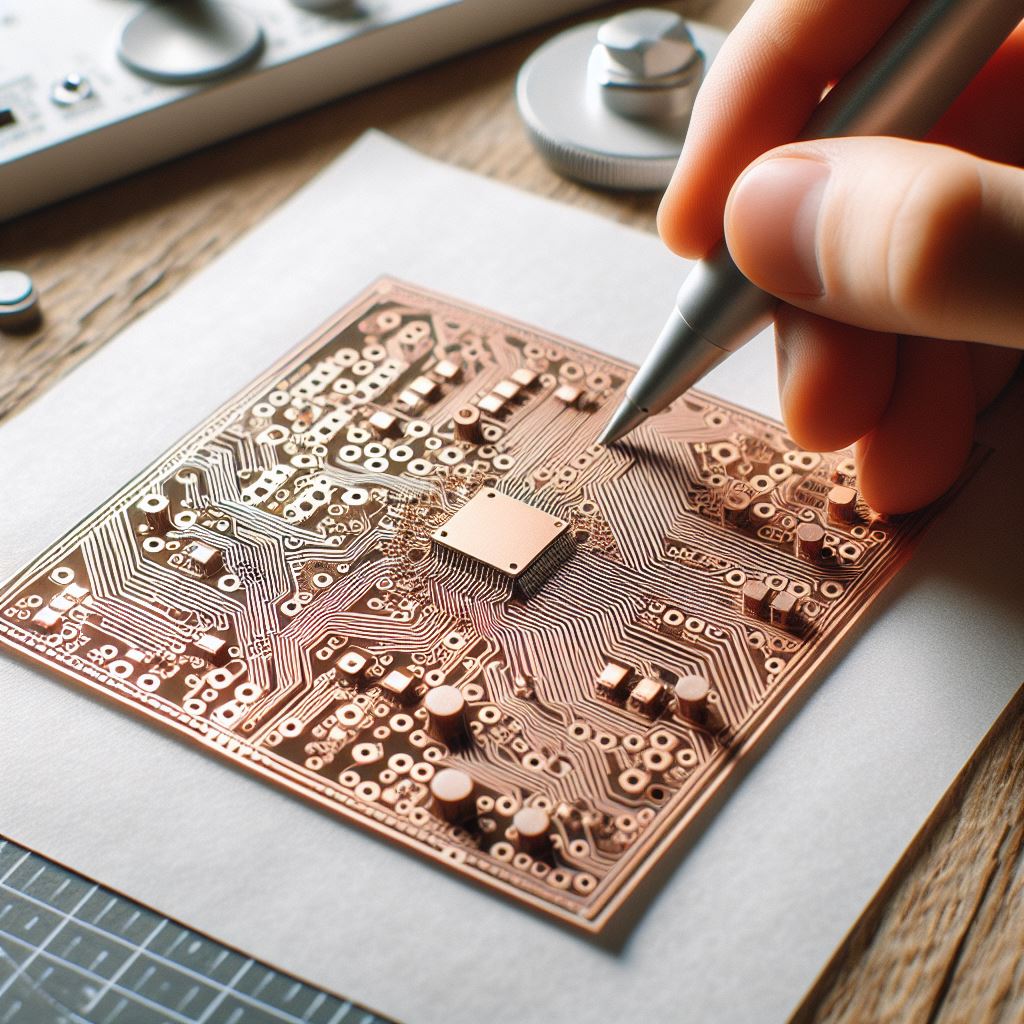
Conclusion
From humble beginnings in ancient China, paper’s journey has been one of continuous metamorphosis. It has transformed from a blank slate for recording thoughts to a catalyst for global revolutions. Its impact transcends mere communication; it has democratized knowledge, fueled economic growth, and shaped the very fabric of human civilization.
As we stand at the crossroads of the digital and physical realms, paper’s legacy continues to unfold. Its adaptability ensures its relevance in the face of new technologies, offering sustainable solutions and tactile experiences in a world increasingly dominated by screens.
Paper is more than just a material; it is a testament to human ingenuity, a canvas upon which we have etched our stories, discoveries, and dreams. It is a reminder that innovation can bloom from the most unexpected places, and its impact can reverberate across generations.
So, the next time you hold a sheet of paper, remember the journey it has taken. It is not just a blank page; it is a portal to a world of knowledge, creativity, and endless possibilities. Let us continue to explore its potential, honoring its past and embracing its future, for the story of paper is far from over
Check out other relevant Blogs:



